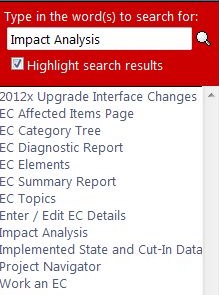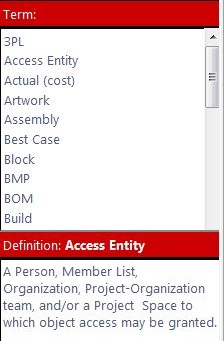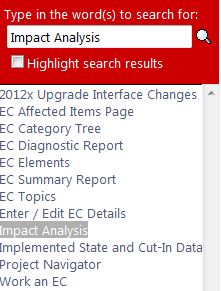 How to Use the PLM Help
How to Use the PLM Help How to Use the PLM Help
How to Use the PLM HelpPLM Help is an educational resource for anyone using ENOVIA PLM.
Whether a Lexmark employee or supplier, PLM Help should be the first stop for questions on how ENOVIA PLM works and for increasing your working knowledge of the system.
A common misconception about PLM Help is that it has detailed information on a user’s business process.
While detailed procedures are given, PLM Help does not give information on business policy.
PLM Help should be used to determine how a particular function or task is achieved.
You would not use PLM Help to determine which Project Space (Design Responsibility) to assign a part or find the right Distribution List to use in an EC.
All business process questions should be directed to members of the project team.
PLM Help can be accessed in two ways:
By entering the URL https://plm.lexmark.com/epss/ or through a browser bookmark to this address.
When working in ENOVIA PLM, click on the PLM Help icon on the global tool bar.
![]()
The PLM Help Home Page displays first.
The Home Page contains links to common information for both new and veteran users with sections on Getting Started and System Navigation and specific topics like Parts, Routes and Tasks, Engineering Changes, Distribution to SAP, the Product and Machine Type Hierarchy, and Grid Browsers.
The PLM Overview Videos section explains the importance of PLM at Lexmark and the path from concept to deliverable products for our customers.
The right of the Home Page is a section on Role Based Support that explains the different roles within ENOVIA and the access and functions they provide.
The Content Frame on left of the screen initially displays the PLM Help Table of Contents.
The Content Frame remains visible at all times as you navigate the PLM Help.
Look to the left on your screen right now to see the Content Frame.
Click a topic in the Table of Contents to view individual sub-topics.
Select an individual topic to view it in the main PLM Help window.
The buttons in the Navigation Bar above the Content Frame determine what the Content Frame displays:
These buttons also remain visible at all times as you navigate the PLM Help.
Selecting any of these buttons does not change the content you are currently viewing in the main PLM Help window.
Table of Contents
Index
Search
Glossary
Next to the Glossary button, the Back button may used to view the page previously displayed in the main window of the PLM Help.
Click above the Content Frame to display the PLM Help Index.
The Index displays a list of all available topics alphabetically.
This feature can be helpful to a user who is not sure the exact terminology and wants to see and browse all available content.
Select an item in the Index to display the topic in the main window.
View an example of the PLM Help Index.

There are two methods to Search:
Use the PLM Help tool bar search:
Type in the – Search - text box at the top right of the screen and press Enter on your keyboard.
Search results display in the Content Frame in alphabetical order.
Check Highlight search results to see the search terms highlighted in the pages of content you select.
Select an item to display the topic in the main window.
If too many results display, refine your search with additional terms and search again.

Click above the Content Frame to display a Search text box and results, shown above.
The results display in alphabetical order.
Check Highlight search results to see the search terms highlighted in the pages of content you select.
Select an item to display the topic in the main window.
If too many results display, refine your search with additional terms and search again.
Click above the Content Frame to display the PLM Help Glossary.
The Glossary defines terms and acronyms used in the system.
Select a Glossary item to display its definition at the bottom of the Content Frame.

Note: Keep in mind that the information contained in PLM Help is to navigate and complete tasks within ENOVIA and not why or when to do these tasks. Your business area determines how the Enovia PLM tool is used for your processes.
Pages often include links to other topics with information that further explains the content and context of the current topic.
For example: "Select Affected Items on the category tree."
You may click on the link, category tree, to display a page that explains what the category tree is and where to find it on the ENOVIA application window.
Search results are an alphabetical list of topics that contain the search term(s). You may have to scroll down to find the topic you need:

If you need to send information to another user, PLM Help topic links can be copied and pasted into an e-mail.
Right click on a topic link in the Table of Contents, Index, or Search results, and select Copy Shortcut, then use Ctrl+V or right click, Paste, in the email.
This is a great way to share information and help users find useful information without having to search again.
Individual page links load the PLM Help without the Navigation bar and Content Frame.
All pages in the PLM Help have a link at the bottom,, which returns to the Home Page and restores the page frames.
If you need assistance with a process not covered in PLM Help please contact PLM Support.
We want to make working in ENOVIA easier and provide the knowledge you need to be successful.